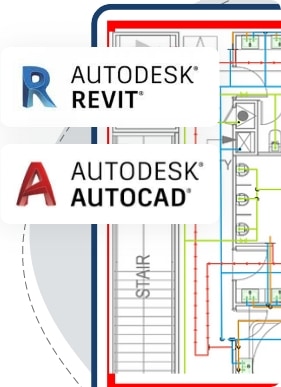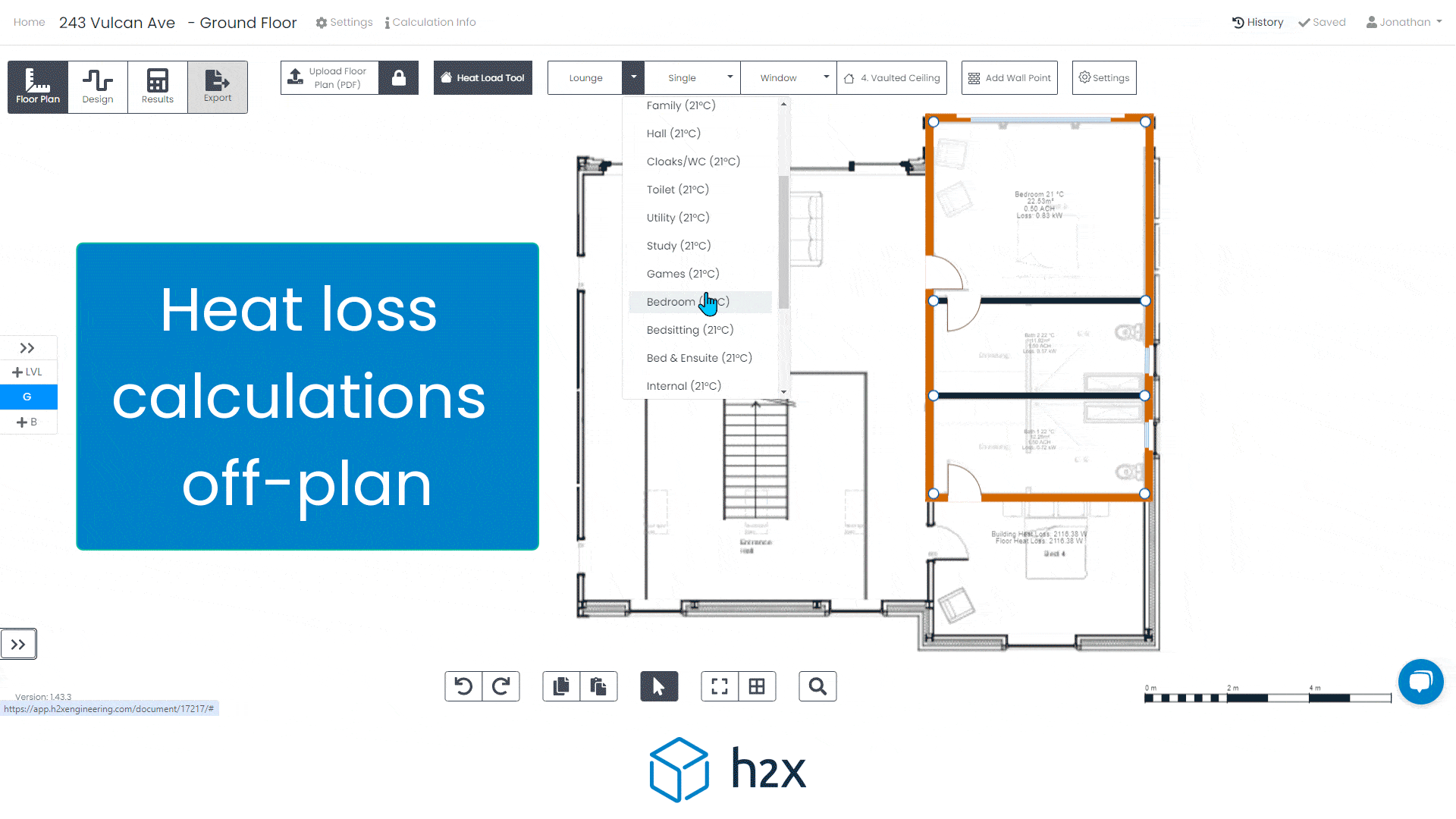
H2X vs Spreadsheets
Since its launch back in 1985, Microsoft’s spreadsheet application Excel has gone on to become recognised as the leading program for the organisation and calculation of data.

Download your free PDF of this article below.
Since its launch back in 1985, Microsoft’s spreadsheet application Excel has gone on to become recognised as the leading program for the organisation and calculation of data.
In fact, we have now reached the point where 18% of people spend 60% or more of their working day using Excel. This includes usage across multiple professions, including:
- Accounting
- Teaching
- Sales
- Market research
Excel spreadsheets are also used widely by engineers during the design and calculation process of their projects. However, spreadsheets aren’t the most efficient tool for engineers, with research suggesting that 12% of spreadsheets contain serious errors.
That’s why H2X was founded. Our software provides engineers with an intuitive solution that reduces human error, enhances quality assurance (QA) and increases productivity.
In this blog, we’re going to compare our software with the legacy approach of using spreadsheets to demonstrate why engineers should consider using H2X instead.
Why are engineers using spreadsheets?
The use of spreadsheets, pipe volume calculator and Pressure Drop Calculator in the engineering calculation processes emerged primarily due to the fact engineers needed a solution that was quicker, easier to use and less prone to error than a traditional pen and paper approach.
Originally designed for tabulating basic accounting and finance figures, Excel has evolved to include a range of functionality that has made it a standard tool within engineering. As a result, many engineers are continuing to use Excel for their calculations out of convenience.
The advantages of using spreadsheets in engineering
In comparison to a legacy approach, there’s no denying that the utilisation of spreadsheets allows engineers to access a range of benefits. These can ultimately contribute towards better designs and optimised outcomes for their various projects.
These include, but are not limited to:
- Reducing errors: By using a spreadsheet to carry out vital calculations, engineers are able to significantly reduce the scope for human error that comes with manually carrying out calculations using pen and paper.
- Speed: Undertaking calculations by hand can be long and tedious. Spreadsheets speed up this process and allow engineers to be more productive and focus on producing high-quality designs.
- Better collaboration: Spreadsheets are much easier to share with colleagues than calculations done by hand, facilitating better collaboration and review processes.
Simply put, spreadsheets have allowed engineers to improve their calculations by increasing both accuracy and efficiency. However, it’s important to recognise that this approach isn’t as comprehensive and robust as some might think.
The disadvantages of using spreadsheets in engineering
Despite the fact that spreadsheets have been able to provide benefits and create efficiencies as we have seen above, that isn’t the full story. There are still numerous drawbacks to relying on spreadsheets that engineers should be aware of.
The key limitations of the spreadsheet approach lie within:
- Tedious and time-consuming processes: While requiring less manual work for the calculations, spreadsheets still require information to be manually entered. This can be a tedious and time-consuming undertaking for engineers, which requires them to manually count and measure components within their design
- Opportunities for human error: Even though spreadsheets were initially adopted in part due to the fact they can help reduce errors, their usage can still contribute to errors throughout the calculation process. This can come in the form of incorrect data entry and incorrect formulas which are almost impossible to find during a review.
- The use of multiple spreadsheets: Even engineers working within the same organisation will often use their own spreadsheets for their calculations. As a result, the review process is difficult to standardise which causes problems with QA and thereby creates risk for the company.
- Difficulty making changes: Design changes occur throughout a project. When engineers are using spreadsheets, these changes are difficult to implement. As a result, the whole process needs to start again, requiring considerable time and manual effort.
- Team changes: When an engineer leaves the company, a new engineer will pick up their project workload. Commonly, the new engineer can not understand or verify the spreadsheet which means they will start the time-consuming and tedious calculation process again.
These deficiencies can cause issues throughout the course of a project that ultimately drain valuable time and resources. Fortunately, in order to overcome these challenges and produce better designs on a consistent basis, engineers can now turn to new and advanced solutions — like H2X.
Why should engineers use H2X?
H2X was founded by engineers frustrated with a dull and labour-intensive design process. We created our cutting-edge software to allow engineers to move away from using spreadsheets and overcome the numerous issues they cause during a project.
Using our software, engineers simply upload a PDF background for their design, choose the calculation parameters, use an intuitive user interface to draw the system layout, and then access automated calculations such as flow rates, pipe sizes, pressures, hot water recirculation, and much more.
By replacing spreadsheets with our software, engineers can benefit from:
- Efficiency: Complete calculations quicker and focus more on the bigger picture.
- Confidence: Avoid human error with transparent, compliant and accurate designs.
- Accuracy: Take calculations to a level of detail previously unattainable.
- Consistency: Standardise processes and outcomes with effective auditing procedures.
Let’s take a closer look at the features of our product and how they can help engineers improve their processes and minimise the disruption, errors and inefficiencies that come with using spreadsheets.
“It is far more enjoyable to use than excel and the
amount of information gathered from H2X is incomparable”
Nick Ilias
Senior Engineer – Ilias Design

Design warnings
One of the central features of our software is proactive design warnings. These mean that, whilst in the process of creating their designs, engineers are made aware of any issues that could go on to cause problems at a later stage in the project.
As a result of these warnings, engineers can:
- Rectify any issues that emerge early on in the design process
- Have confidence that their final design is accurate and efficient

Verified calculations
Given that a significant amount of a project’s build cost often gets spent on fixing mistakes that emerge from the design phase, it’s crucial that engineers are able to ensure that their calculations are as accurate as possible. Given the difficulties in reviewing thousands of lines on a spreadsheet and the potential for human error when entering data manually, this is an ongoing challenge.
Fortunately, our advanced software has had its calculations certified by the Chartered Institution of Building Services Engineers (CIBSE). This means that, unlike with spreadsheets, engineers can be confident that automated calculations won’t lead to trouble further down the line which results in increased workloads and project delays.

Shareable link
Once their designs are complete, engineers need to be able to share results in order for a comprehensive review to take place. However, when Excel spreadsheets are shared across large organisations or with external teams, there is potential for issues due to:
- Trying to match results from the thousands of lines in the spreadsheet to the design layout
- Verifying the inputs in the spreadsheet, such as pipe lengths, are accurate
However, H2X provides a solution. Our software helps teams improve the review process by allowing team leaders, colleagues and external project team members to review results directly in H2X where the accurate results are assigned to each component in the design.
In addition to that, H2X utilises cloud-based software, which means that engineers are not tethered to a single location. As a result, sharing and reviewing designs across offices and countries is quicker and easier than ever before.
Effortless redesigning
Ongoing changes to the architectural layout of a project are a challenge for modern-day designs. When engineers deploy a traditional spreadsheet approach, this can, unfortunately, result in the entire design process needing to start again from scratch.
With H2X, this can finally become a thing of the past. As a project evolves, engineers can easily make changes to their design and benefit from instant and automatic calculation updates.
Using the software, users can simply upload the latest background and drag pipes and fixtures to their new location. This helps to save valuable time and reduce errors in the redesign process.
“Simple and easy to use and saves hours on re-design
when the architect changes the floor plans!”
Nick Soden
Director at NAS Hydraulics

Revit Export
Calculations are just one important part of the design process. Engineers are also required to turn their design layout and results into 3D models using Revit.
When engineers use spreadsheets for their calculations, they are required to create the Revit model themselves manually. This is not the only a time consuming process, but it also represents a significant risk of human error. Similarly to how there is a risk when inputting data manually into spreadsheets, there is a risk when transferring data from a spreadsheet to the Revit model.
H2X can help with this too. Using our Revit add-in, you can turn your H2X design into a 3D Revit model within minutes. This not only saves a significant amount of time, but removes the risk of the Revit model containing costly errors — such as incorrect pipe sizes.

Save time and improve processes with H2X
Whilst spreadsheets have undeniably played a role in the evolution of engineering design and calculation processes, at H2X, we believe it’s time for the industry to start using intuitive software to take things to the next level.
Versatile and powerful, H2X allows engineers to design flawless, high-quality systems quickly and effectively without the need for manual spreadsheet calculations or Revit drafting.
As you can see from the table below, H2X enhances legacy spreadsheet processes and provides engineers with an easy-to-use, intuitive solution that contributes to accurate, high-quality designs.
| Task | Spreadsheets | H2X |
| CIBSE Verified Results | No | Yes |
| Easy to Review | No | Yes |
| Easy to Redesign | No | Yes |
| Provides Design Warnings | No | Yes |
| Exports i.e. Revit | No | Yes |
| Highly Accurate | No | Yes |
| Consistent Outcomes | No | Yes |
| Manual Measurements | Yes | No |
Book a free demo with one of our experts today for a tailored demonstration of how our product can help you cut design time in half whilst improving quality.
¹ How Many People Have Ever Had Formal Excel Training? New 2022 Research
5 Reasons Industry Experts Design with H2X
- Exceptional Support
- Proven & Reliable
- Ease Of Use
- Built By The Industry
- Worldwide User Base

What's in the Pipeline?
Get technical resources delivered to your inbox weekly!













